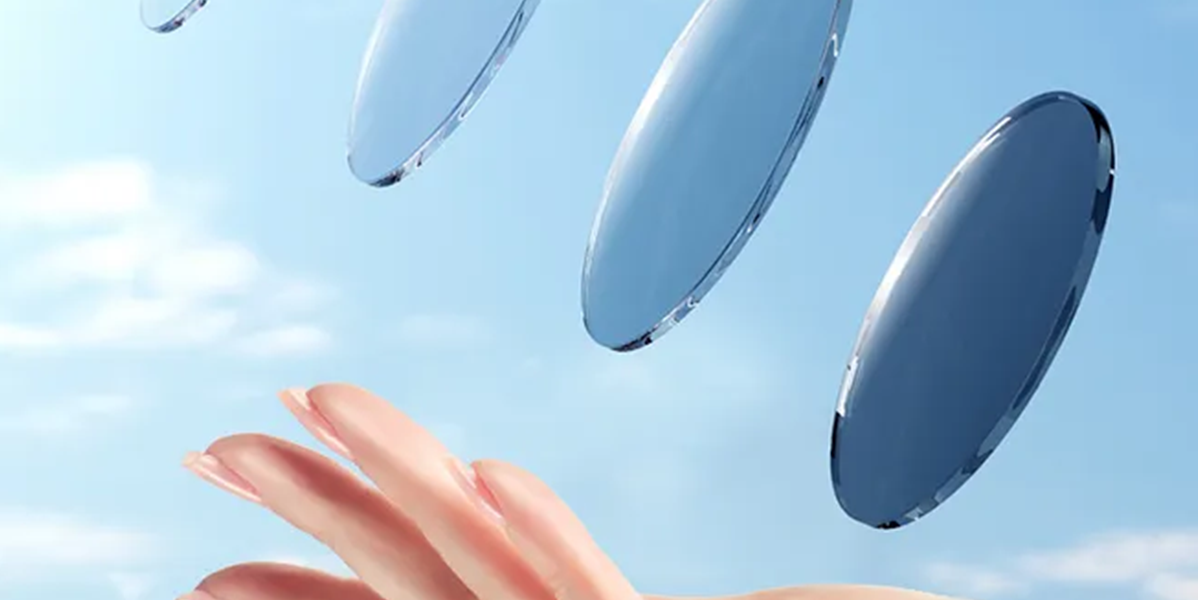Plexiglas design type
Aspherical lens
The traditional spherical lens has a distortion phenomenon when looking at objects around the lens, which limits the wearer's field of vision and inevitably has the visual defect of spherical aberration. Aspherical lenses reduce the edge aberration to the minimum. The base curve of aspherical lenses is flatter, lighter in weight, and looks more natural and beautiful. In the case of high diopter, the deformation of glasses can be reduced. For consumers with high visual acuity, it may be more suitable to choose aspherical lenses.
asymmetrical design
It is mainly aimed at customers with special requirements. In order to make binocular vision more comfortable, the wearer may require the lens to be equally clear when seeing near and far objects, which places many demands on the design of the lens.
Progressive lens is the abbreviation of progressive multifocal lens. The fitting of progressive lens must provide prescriptions for both eyes. Then, the designer uses the upper and lower width of the lens to design the upper part of the lens to be used for distance. The halves are designed for close-up luminosity, and the upper and lower parts are designed as a continuous light-adding part. Progressive films allow consumers to have a clear view from far to near.
Hard and soft design
For lens designers, there are usually two ways to define a new progressive lens: 1. Use a short and rapid progressive design, but this will accumulate a lot of distortion on the periphery of the lens and form a rigid design. ②Use a long, slow progressive design to spread the distortion to the entire lens to form a soft design. In fact, only a multi-layer design that combines the above two can form the best effect.
Various designs
A single design of the lens, to deal with multiple eye problems seems a little more than enough, such as when presbyopia and myopia occur at the same time. The multi-designed lenses can adapt to the needs of different customers to meet the visual requirements of different wearers and ensure that each customer can wear them comfortably.
polarized lens
The polarized lens design can protect people from reflected light and can enhance the visual contrast outdoors. Especially when driving, polarized lenses can protect the wearer's eyes. Also, most tinted sunglasses use polarized lenses.
multifocal design
The design of double light, triple light and progressive film all have one thing in common, that is, the principle of small area is used. In the same lens, the near area and the far area are divided, and in a large range, these areas are integrated. However, the above three are different in the division of the spherical surface of the lens.
Bifocal lenses are mainly used for hyperopia correction. The classic bifocal lens design enables the wearer to see both distance and near vision at the same time, with a wide field of vision. It has a better effect for workers who have been near the point for a long time, such as architects, accountants, artists, etc.
Trifocal lenses are mainly aimed at those who need intermediate distance vision, such as those who often work in front of computers or cash registers. Progressive multifocal lenses use the method of gradually progressive diopter instead of changing the power instantaneously. This design can avoid the phenomenon of "image jumping". For example, in the supermarket, you can easily look at the shopping list in your hand through progressive multifocal lenses, and you can also easily find the products you want on the shelves. However, the initial stages of wearing progressive addition lenses require some training.

